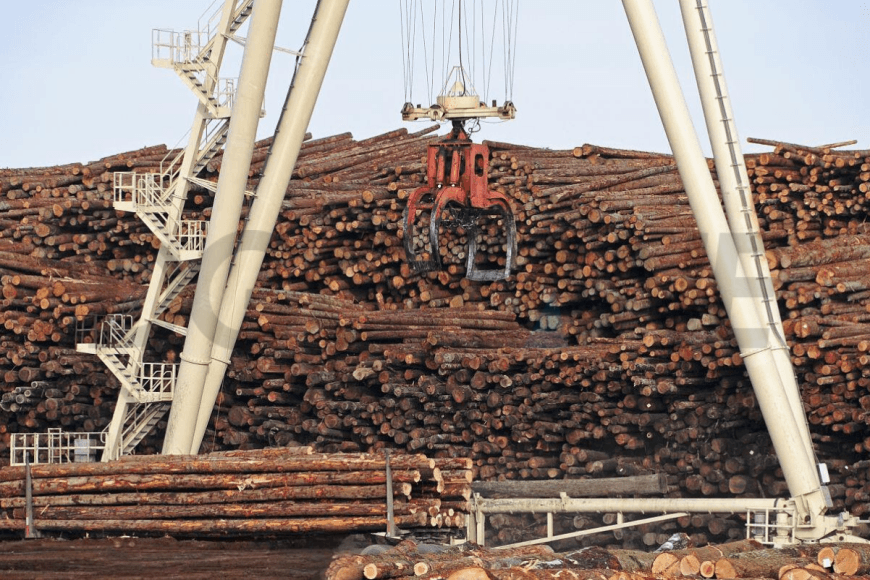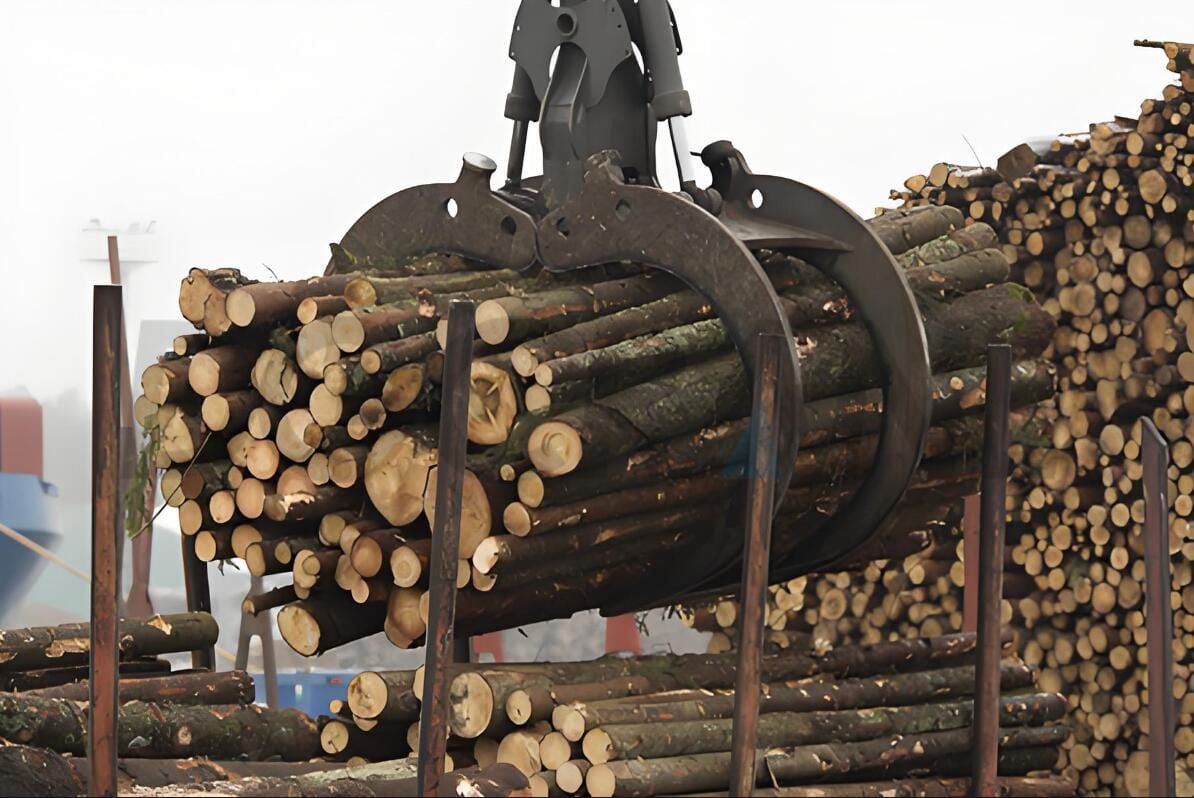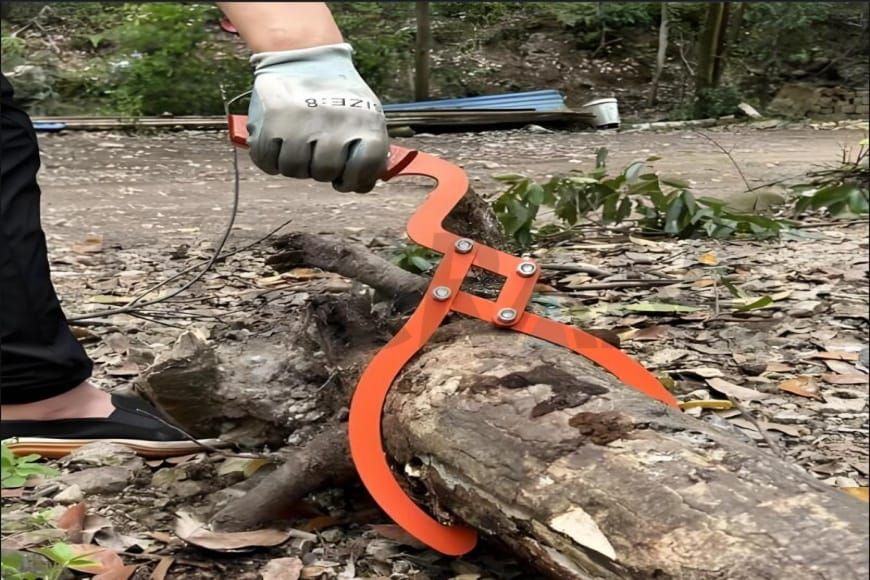Overhead Cranes for Timber Lifting: Efficient and Safe Wood Handling
Timber lifting crane equipment is specifically designed for the efficient and precise handling of various types of wood, including logs, planks, and other timber products. These machines offer strong load-bearing capacity and excellent stability, ensuring safety and efficiency during operation. Widely used in lumber mills, warehouses, and construction sites, they help boost productivity and reduce labor demands.
Gantry Crane for Timber Lifting
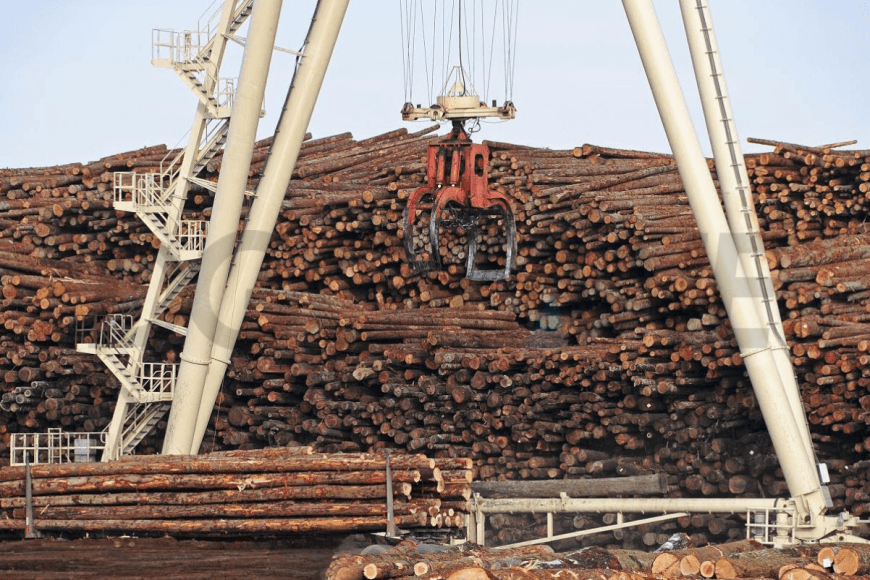
Features and Advantages:
- Efficient Handling:
Gantry cranes can handle large volumes of timber at once, especially bulk quantities of logs and planks. Their high lifting capacity and wide span design make it possible to move oversized timber with ease. - Flexibility:
Gantry cranes typically run on ground-mounted rails, making them well-suited for outdoor and open-air environments. Their mobility allows them to cover large working areas in timber yards, ports, and docks. Operators can precisely control the crane for accurate timber handling, especially during sorting and dispatching in storage areas. - Enhanced Safety:
Gantry cranes are equipped with hydraulic or electric control systems that ensure smooth and flexible operation, reducing the safety risks associated with manual handling. Proper lifting attachments and anti-slip features ensure stability during lifting, preventing timber from falling. - Space-Saving:
Gantry cranes are capable of performing material handling tasks over a wide area, making them ideal for timber yards or warehouses. Thanks to their large span and lifting height, they can efficiently handle timber within limited space, maximizing the use of the working area.
Application
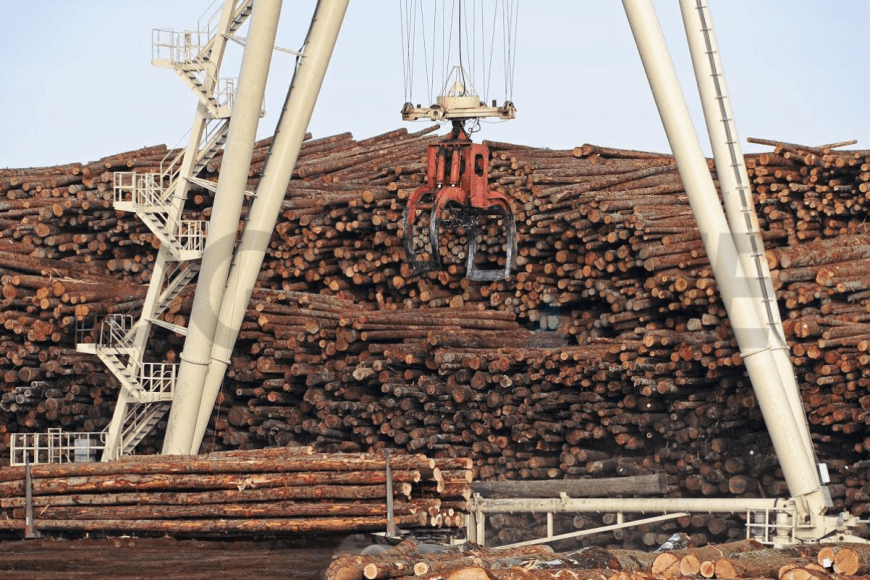
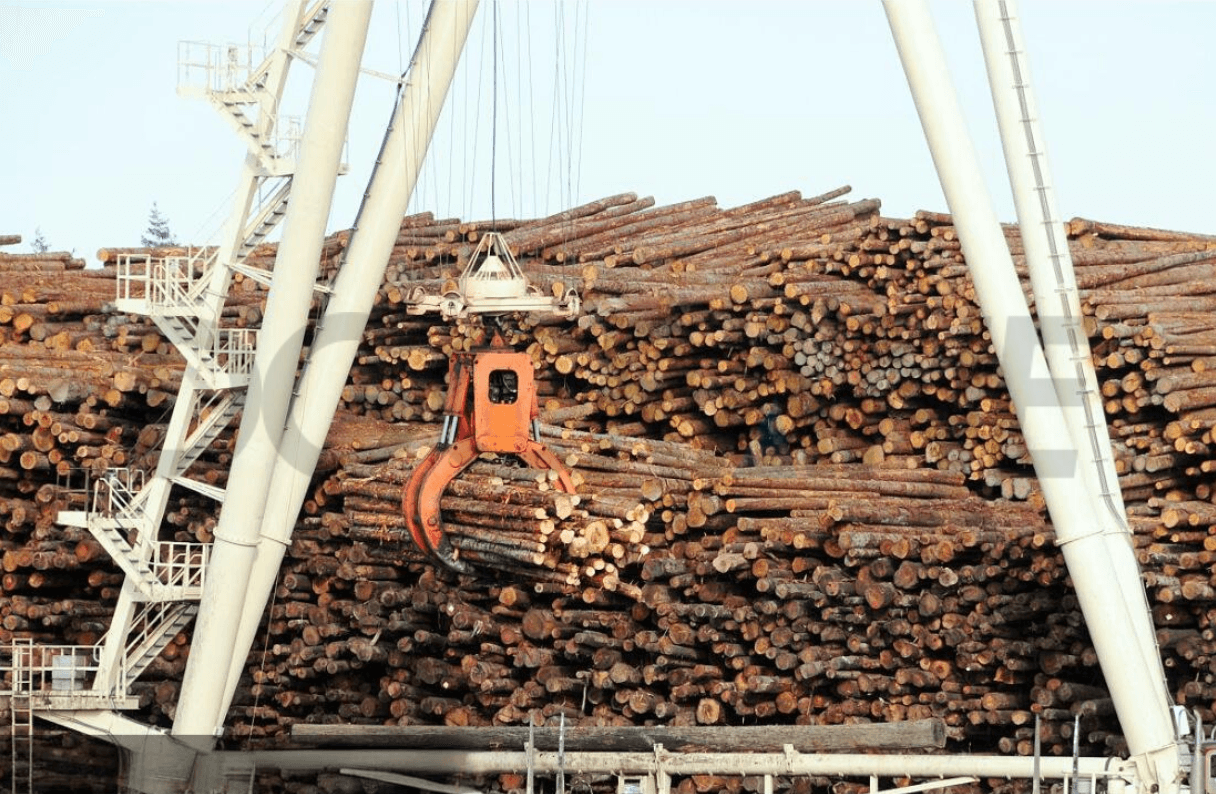
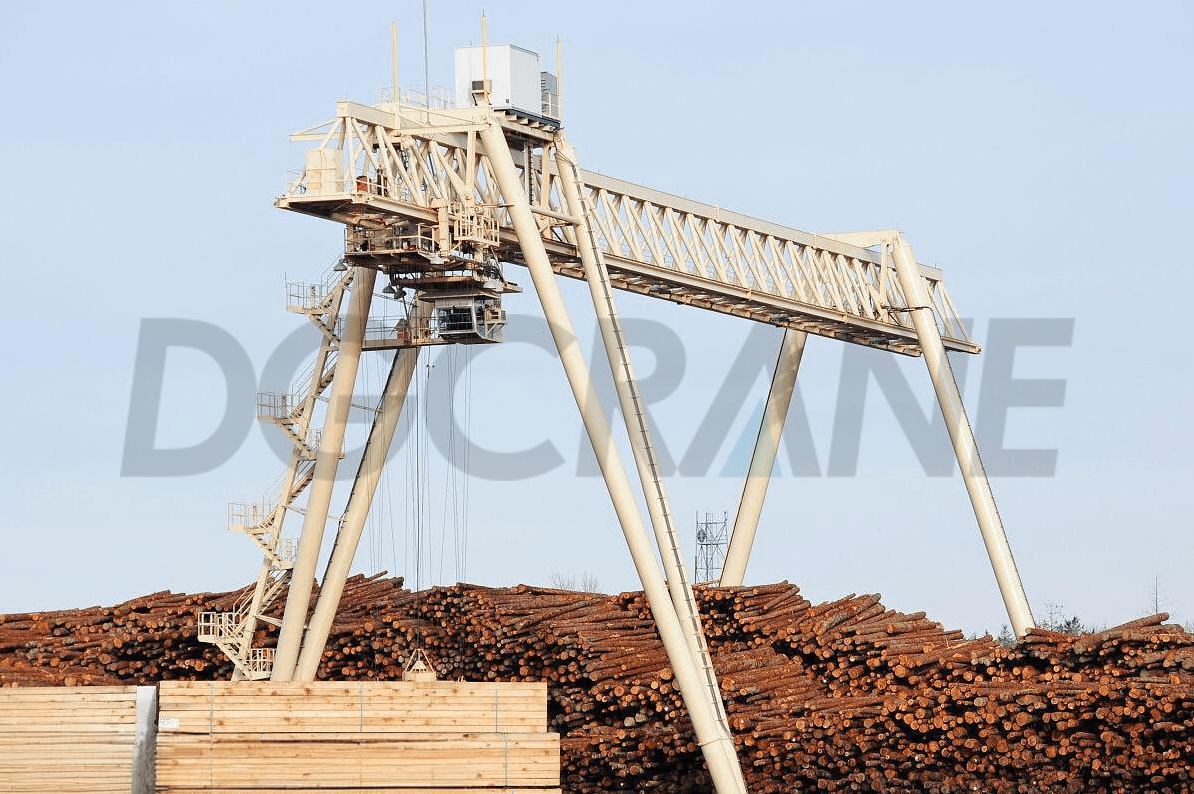
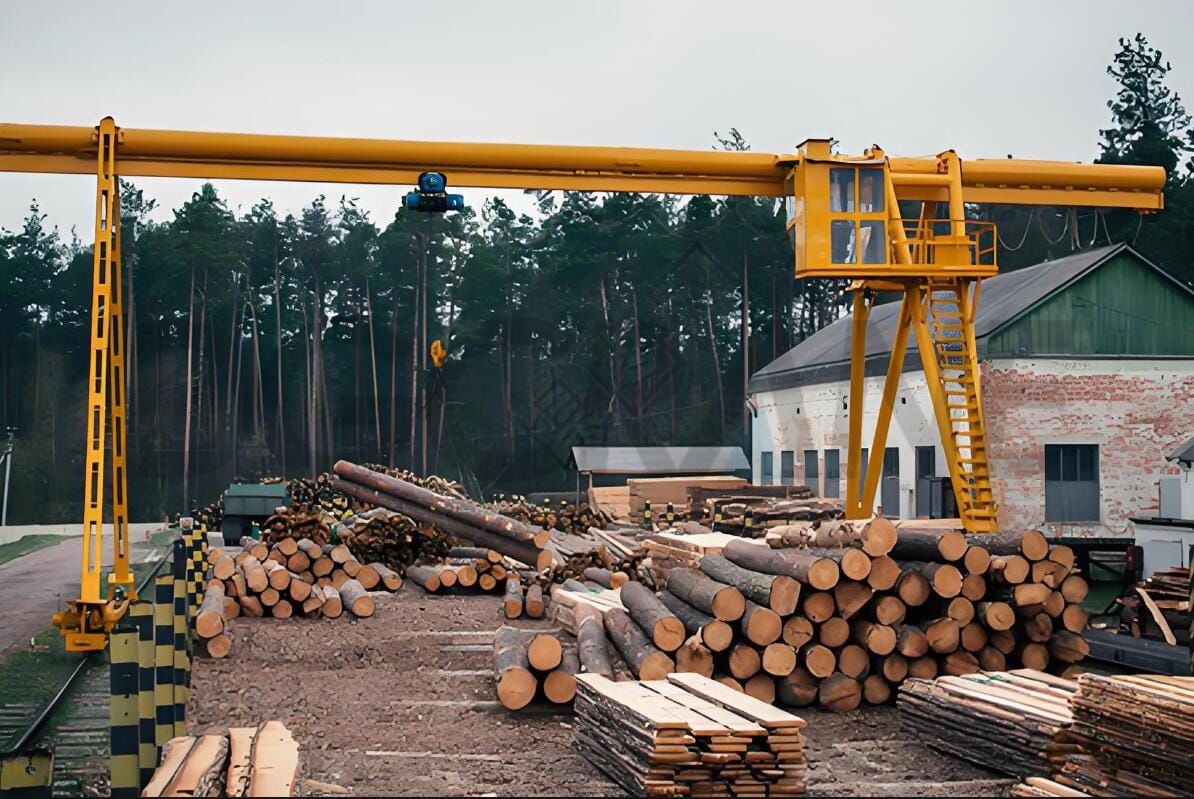
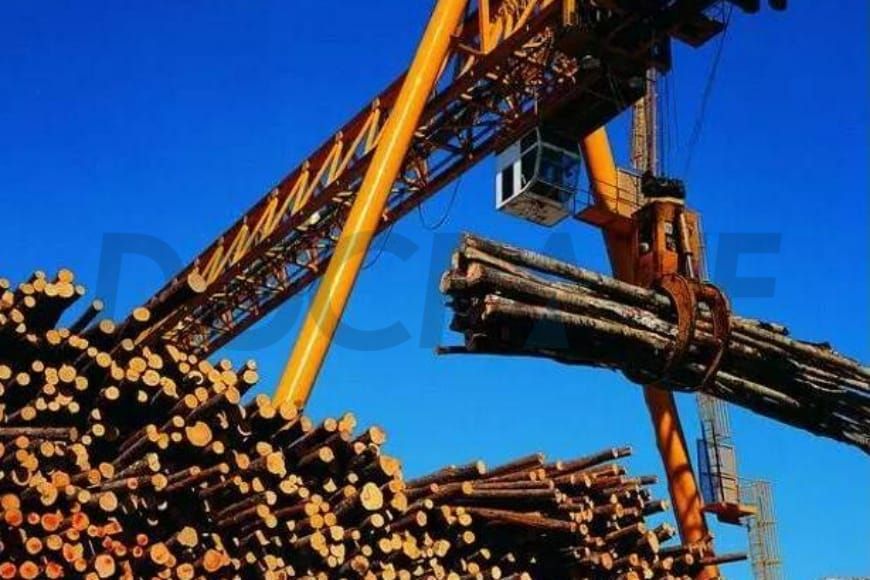
Timber Grabs
Timber grabs are widely used in industries such as timber yards, large wood product factories, paper mills, and ports. They are designed for tasks like unloading ships, loading barges, bundling, truck loading, and stacking or unstacking timber. The structure is available in single-rope, double-rope, four-rope, and electric types, and can also be custom-designed according to user requirements. Timber grabs can be used in combination with gantry cranes, overhead cranes, or truck-mounted cranes to significantly improve the efficiency of timber handling.
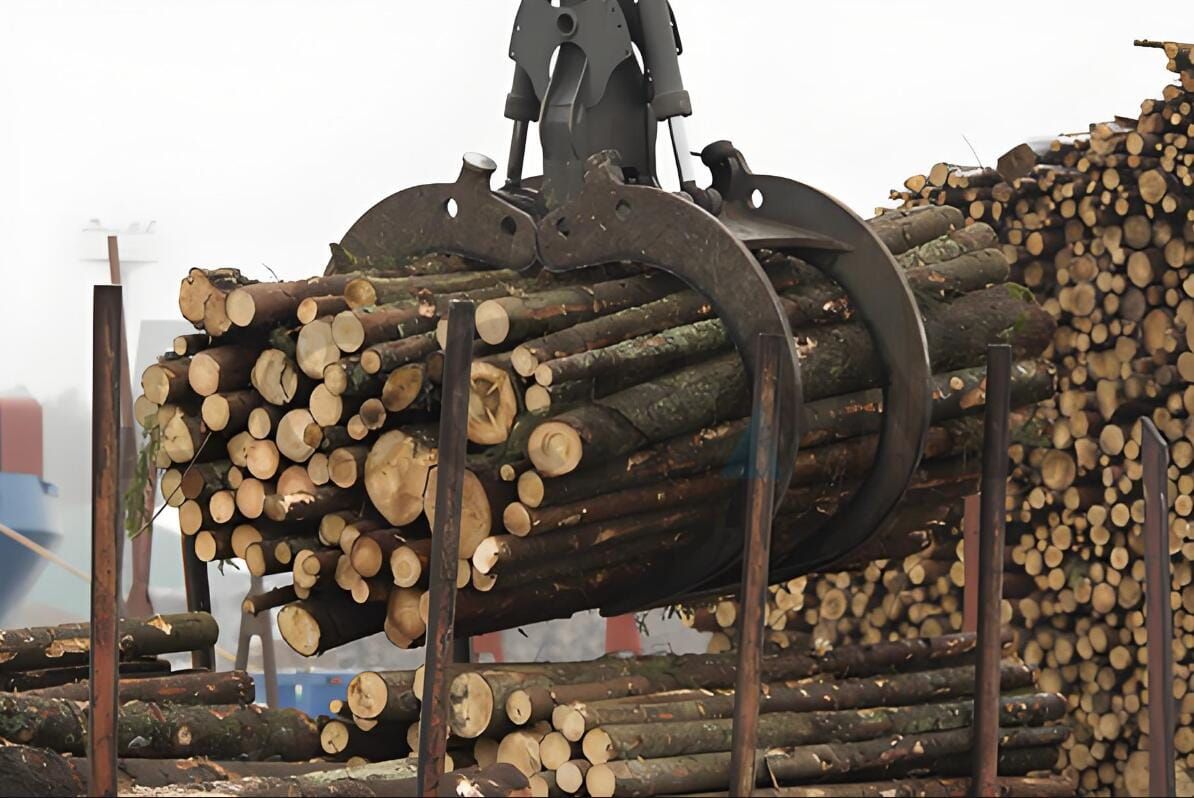
Features and Advantages
- High Load Capacity:
Capable of gripping large and heavy logs, significantly improving work efficiency. - High Grabbing Precision:
Well-engineered design allows for accurate handling of irregularly shaped logs, minimizing damage to the timber. - Flexible Operation:
Performs efficiently even in narrow or complex environments. - Excellent Durability:
Typically made from high-strength steel, the grab offers strong wear resistance and is well-suited for harsh working conditions.
Application

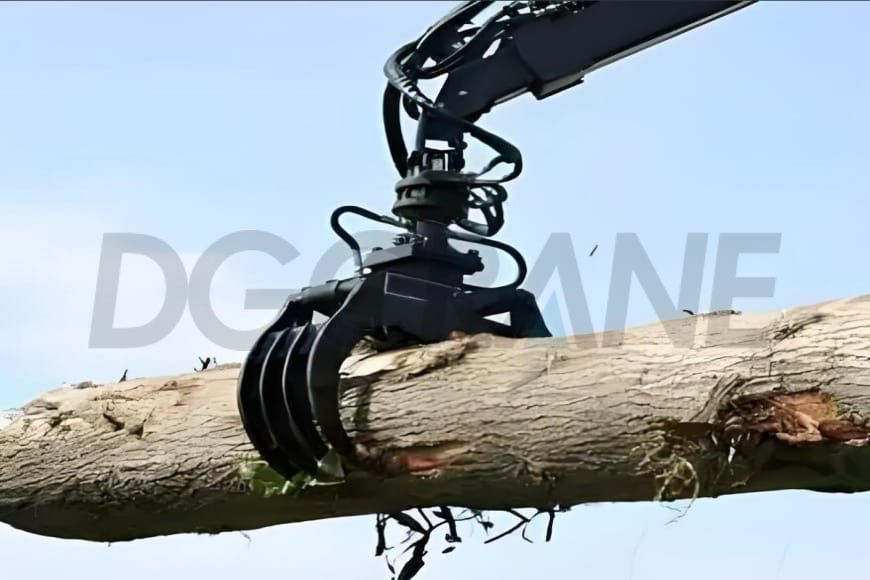
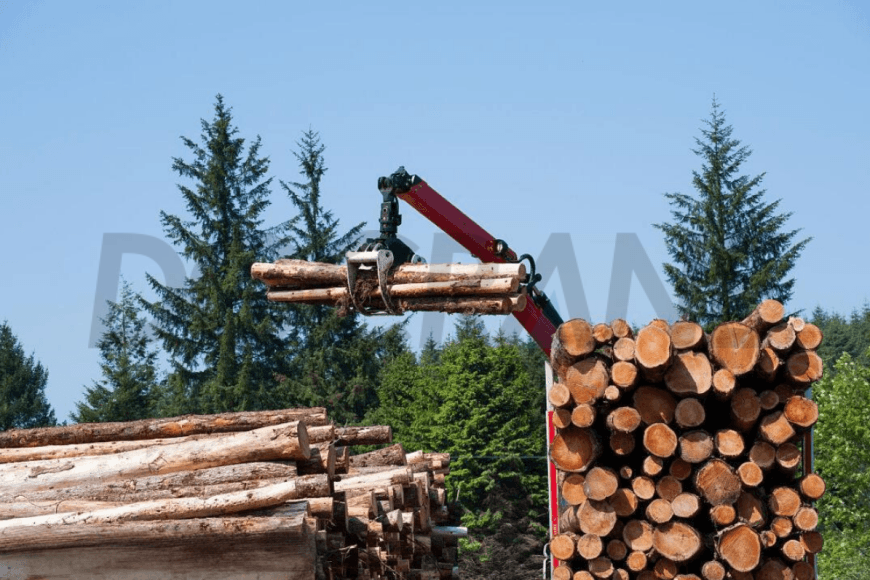

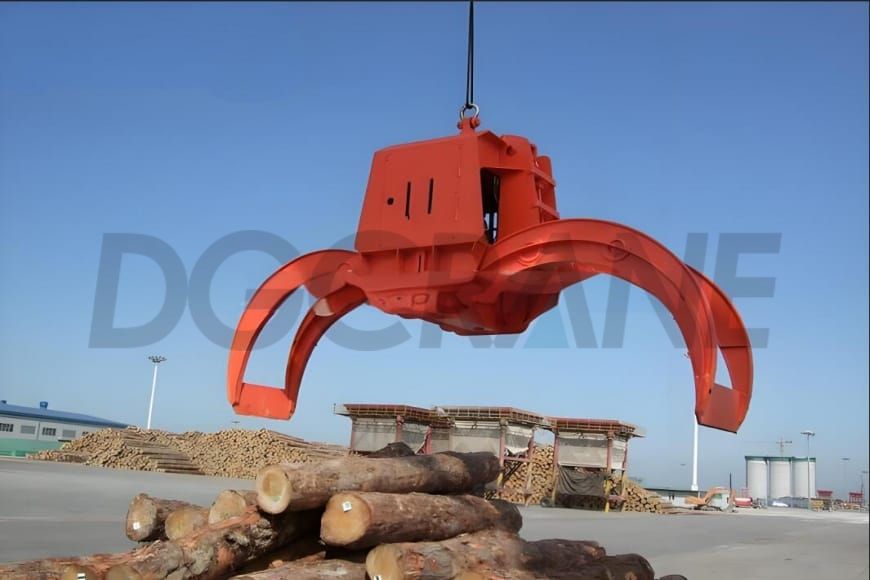
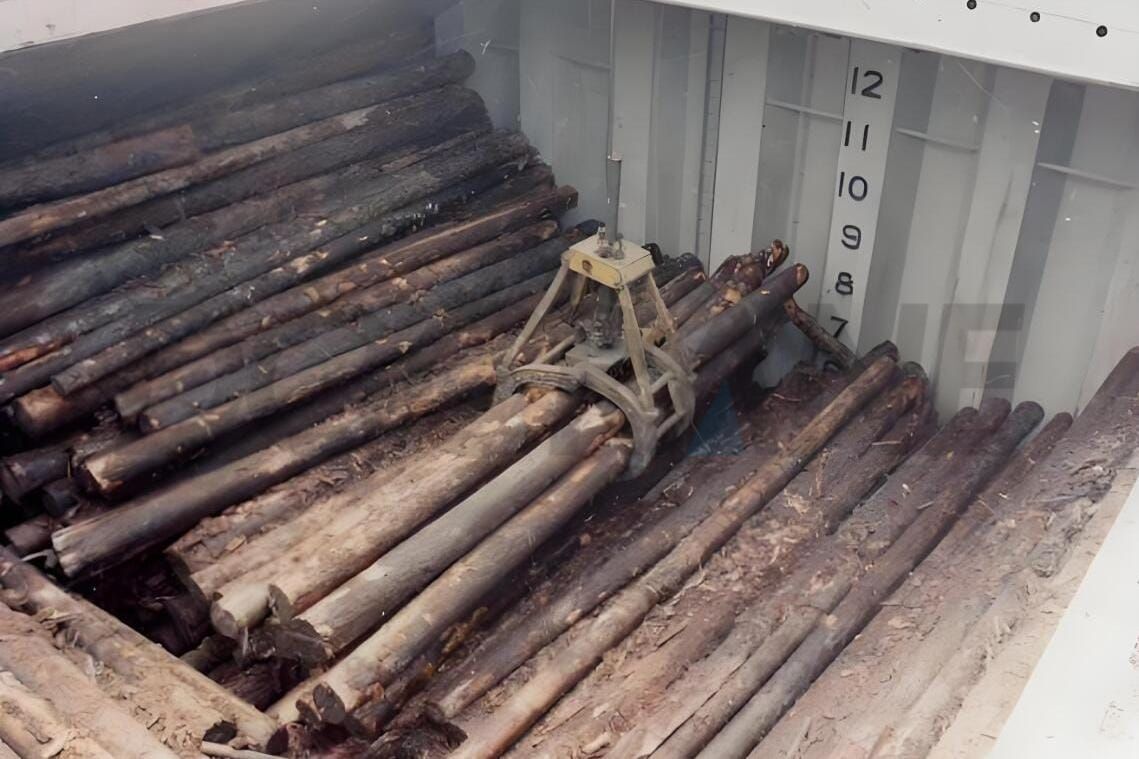
Log Lifting Tongs
Clamps for gripping wood are specially designed tools for handling and grasping timber, particularly logs and planks. Common types include log clamps, timber clamps, and wood grapples. These clamps can be used in combination with various lifting equipment, such as forklifts, cranes, and trailers, for tasks like timber handling, stacking, loading, and unloading. Below are the common types of timber clamps:

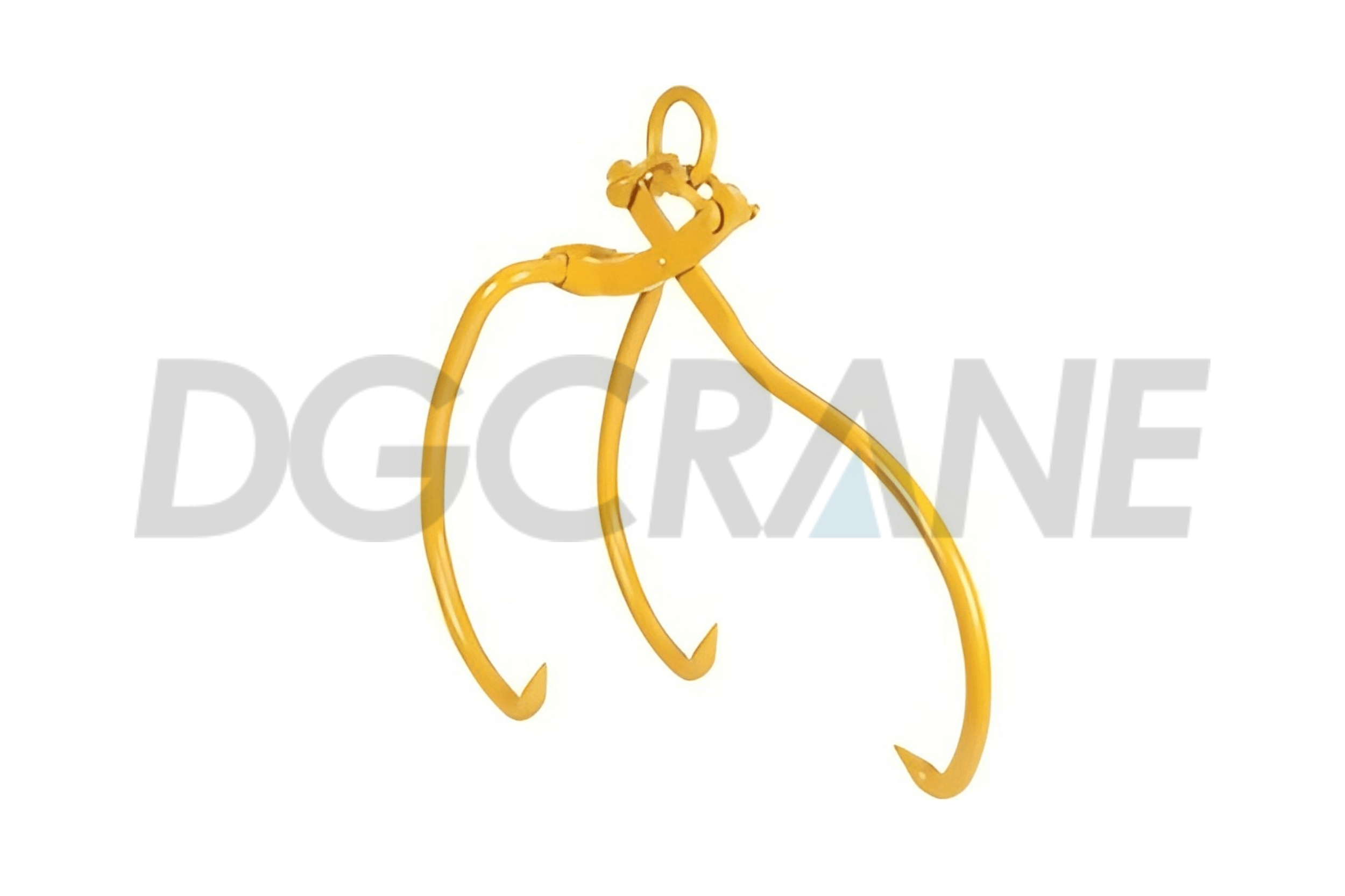
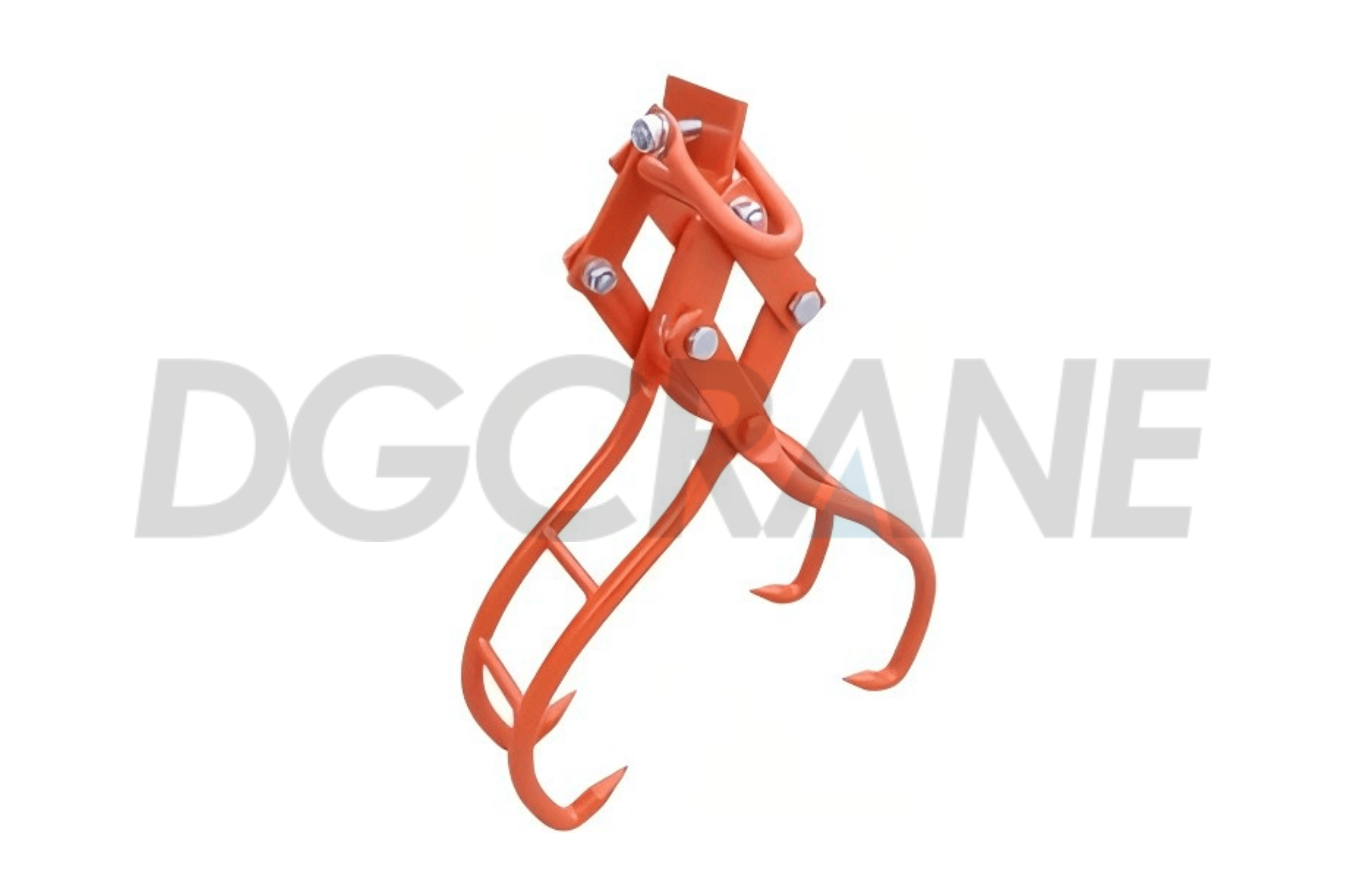
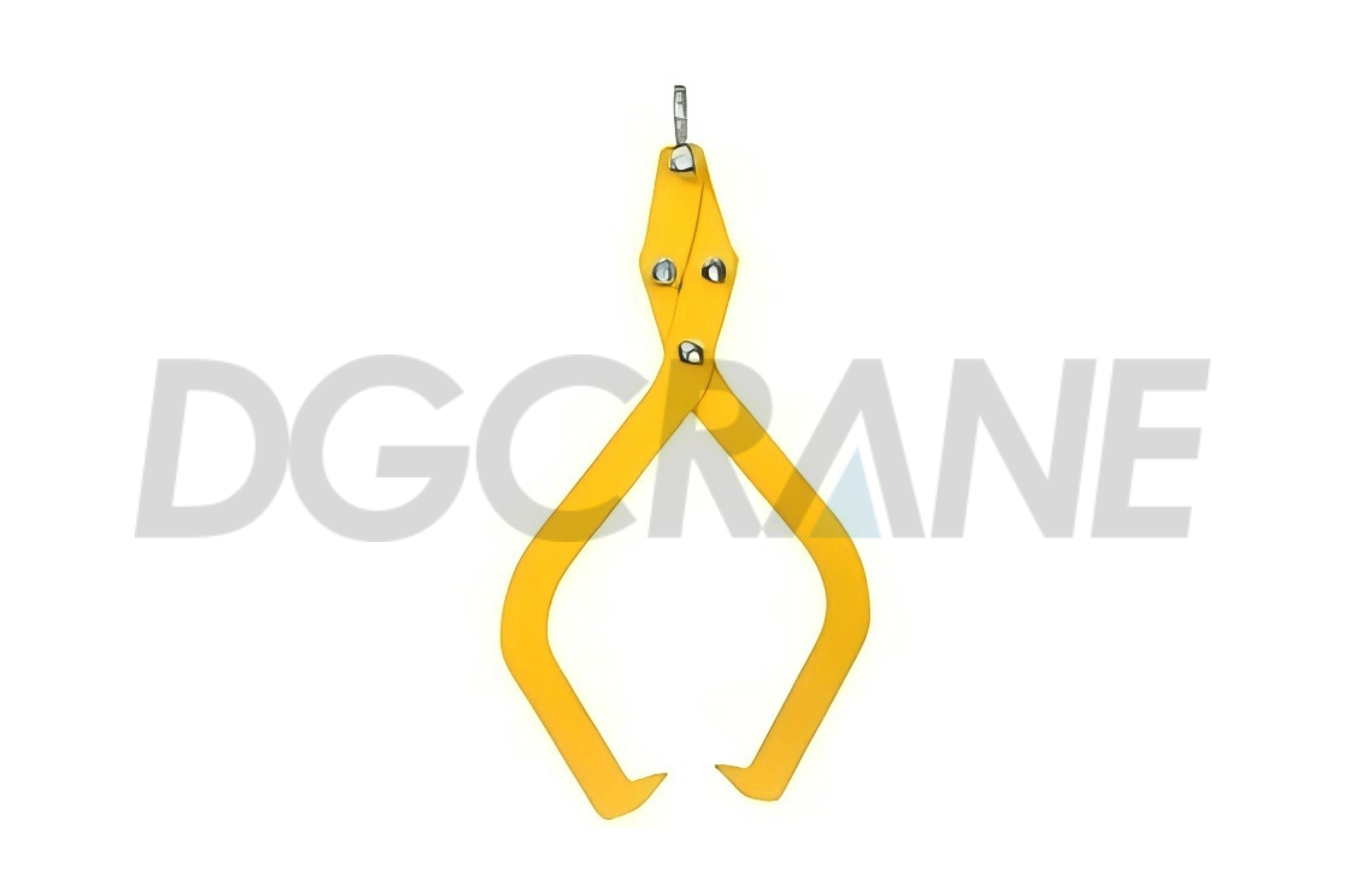
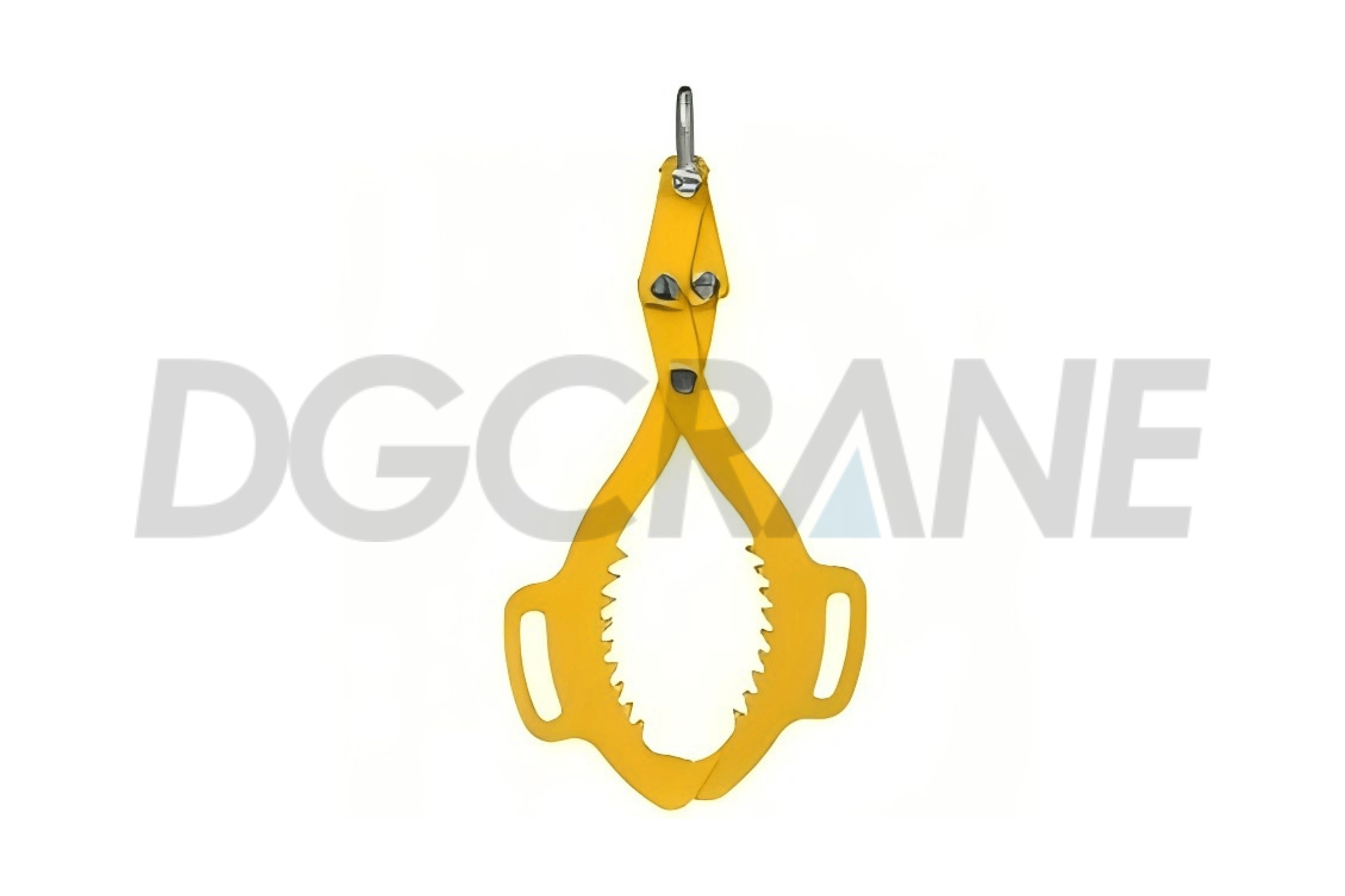
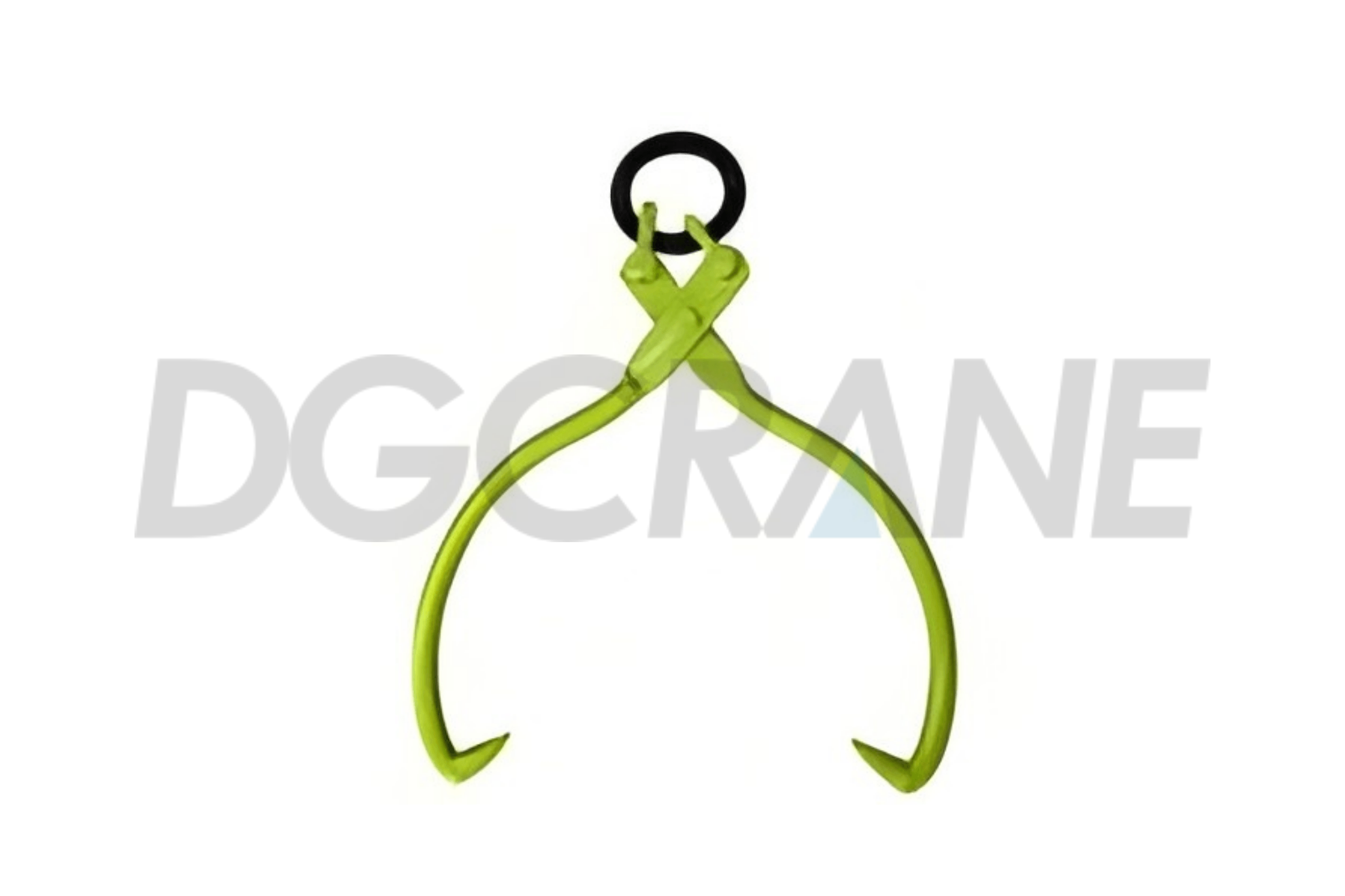
Features
- Powerful Gripping Force:
Equipped with a hydraulic system that provides strong clamping force to securely grip logs of various diameters and prevent slipping. - High Adaptability:
Adjustable jaws allow the clamp to handle logs of different sizes. - Efficient Handling:
Greatly improves handling efficiency and reduces the need for manual labor. - Excellent Durability:
Made from high-strength steel, the clamp is wear-resistant and built to withstand harsh environments. - Flexible Operation:
The hydraulic control system ensures precise operation, making it easy to adjust the opening and closing of the jaws. - High Safety:
Anti-slip design and strong stability enhance operational safety.
Application
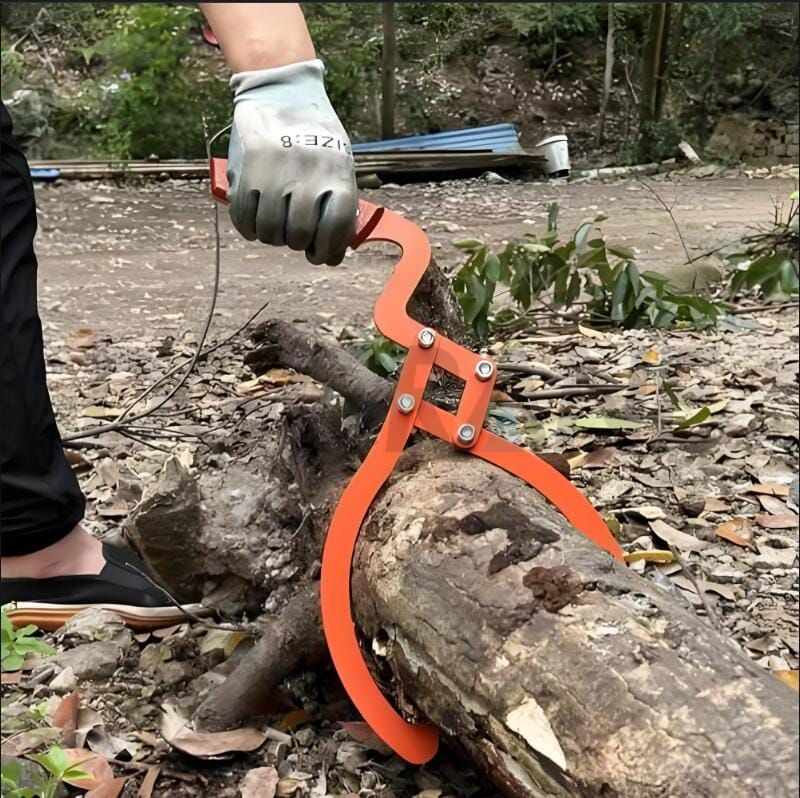
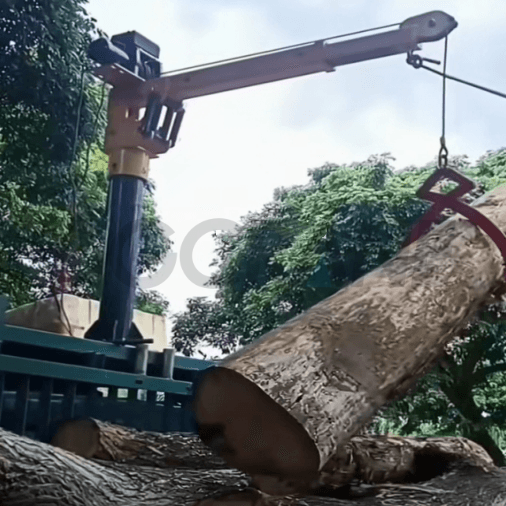
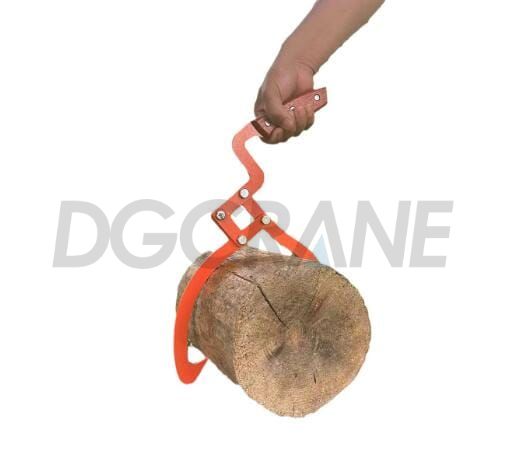
How Are Overhead Cranes Used in the Log and Timber Industry?
1. Lumber Processing Plants
- Log Handling and Stacking:
Lumber mills receive large and heavy logs. Cranes are used to unload them from transport vehicles and stack them in the processing area. - Timber Cutting and Transfer:
During processing, the cut wood needs to be transferred to the next stage or to the stacking areas. Cranes are commonly used to move and stack planks, boards, and other processed wood products.
2. Wood Flooring Manufacturing Plants
- Log Handling and Transfer to Processing Area:
Cranes are used to move logs from trucks to the flooring production area, especially when dealing with large volumes of heavy timber. - Board Drying and Stacking:
After cutting, the wooden boards are sent to drying kilns. Cranes handle the transfer of these boards into and out of the drying chambers and to the storage area once drying is complete. - Finished Flooring Handling:
Once production is complete, cranes are used to move and stack finished flooring products in the warehouse, ensuring orderly storage for packaging and shipping.
3. Timber Wholesalers and Warehousing
- Timber Inbound and Outbound Handling:
In timber distribution and storage centers, cranes are used for loading and unloading timber, improving operational efficiency and reducing manual labor. - Sorting and Stacking:
Cranes assist in sorting and stacking timber according to size and specification, making storage and retrieval easier and more efficient.
4. Construction Sites
- Handling Logs and Wooden Components:
Construction projects involving wooden structures require the movement of large amounts of timber and wooden components (such as beams, planks, and columns). Cranes ensure safe and accurate lifting to the designated construction area. - Installation of Wooden Roof Structures:
During the assembly of wooden roof trusses, cranes are essential for lifting heavy timber elements into place, ensuring structural safety and efficiency.
5. Furniture Manufacturing Plants
- Handling Logs and Boards:
Cranes are frequently used to move raw logs and boards into production lines for cutting and shaping. - Lifting and Moving Large Furniture Components:
In the assembly phase, especially for large furniture items like beds or tables, cranes assist in lifting and positioning parts without causing damage. - Finished Product Handling and Stacking:
Once furniture is complete, cranes are used to move it to stacking or packaging areas, ensuring smooth logistics and transport.
6. Wood Waste Recycling Facilities
- Waste Handling and Stacking:
Wood waste, such as offcuts, sawdust, and broken boards, is transported to recycling areas using cranes. For larger wood waste pieces, cranes are essential for efficient handling. - Waste Compression and Storage:
After collection, wood waste is often compressed and moved to storage using cranes, facilitating subsequent processing or resale.




































































































































